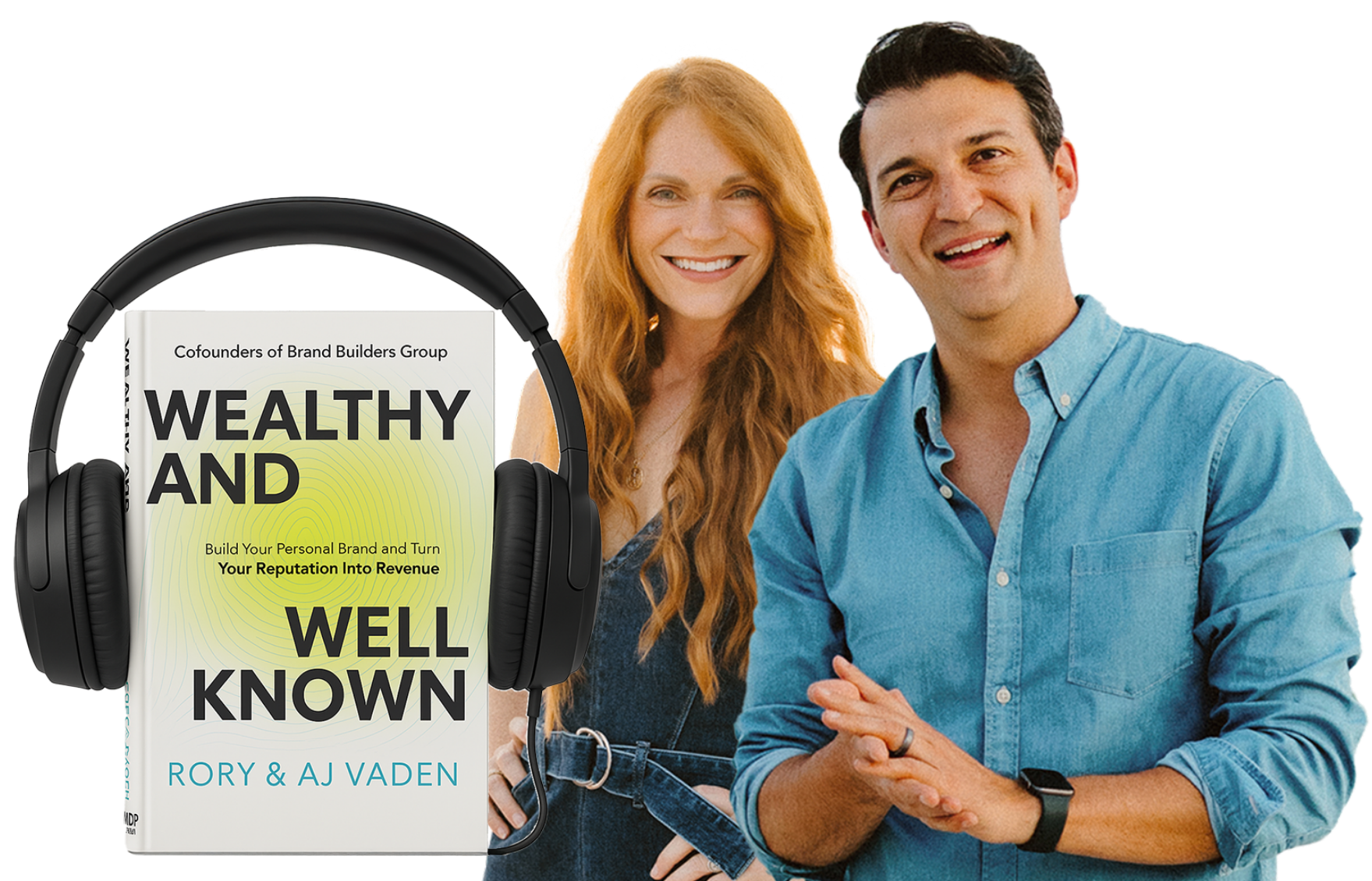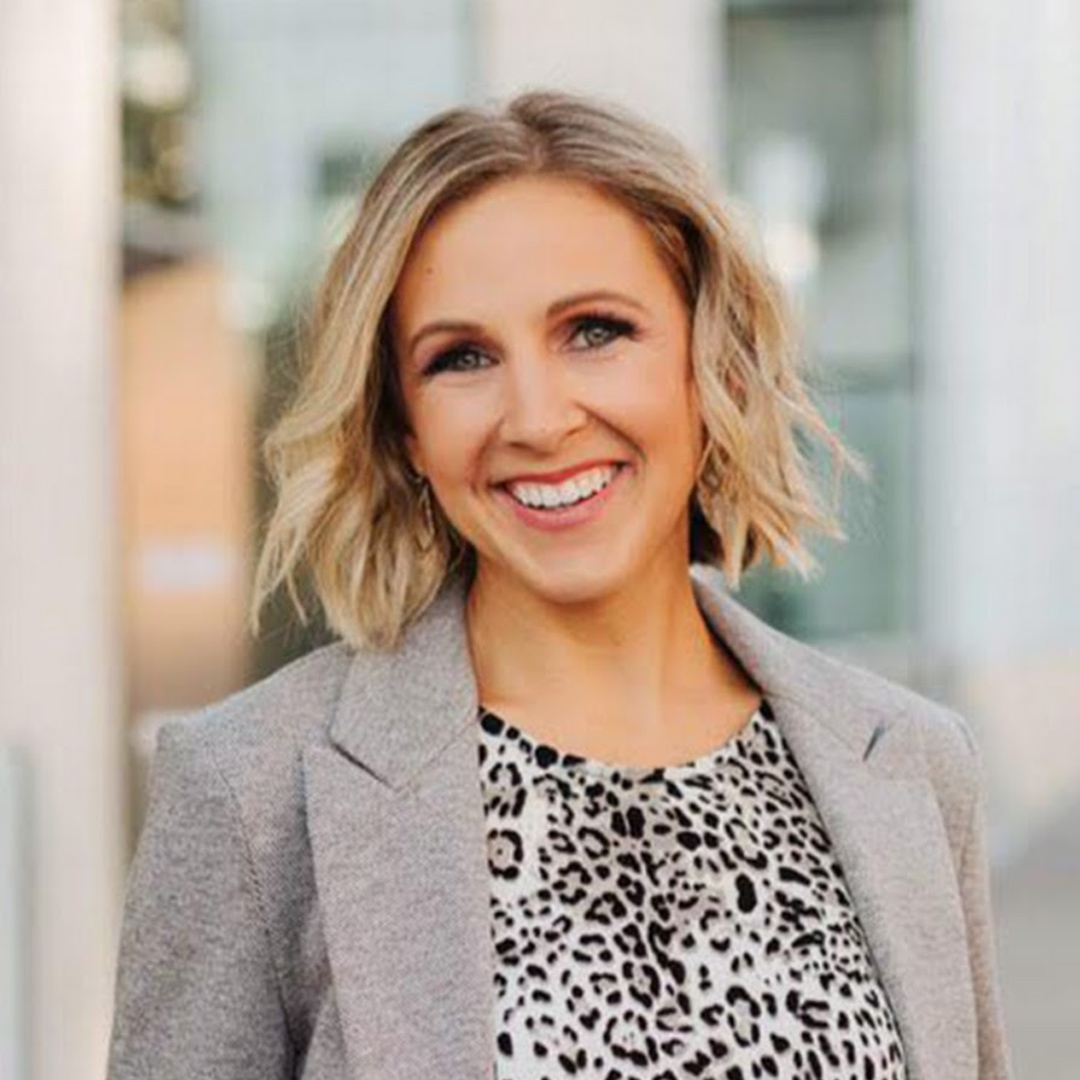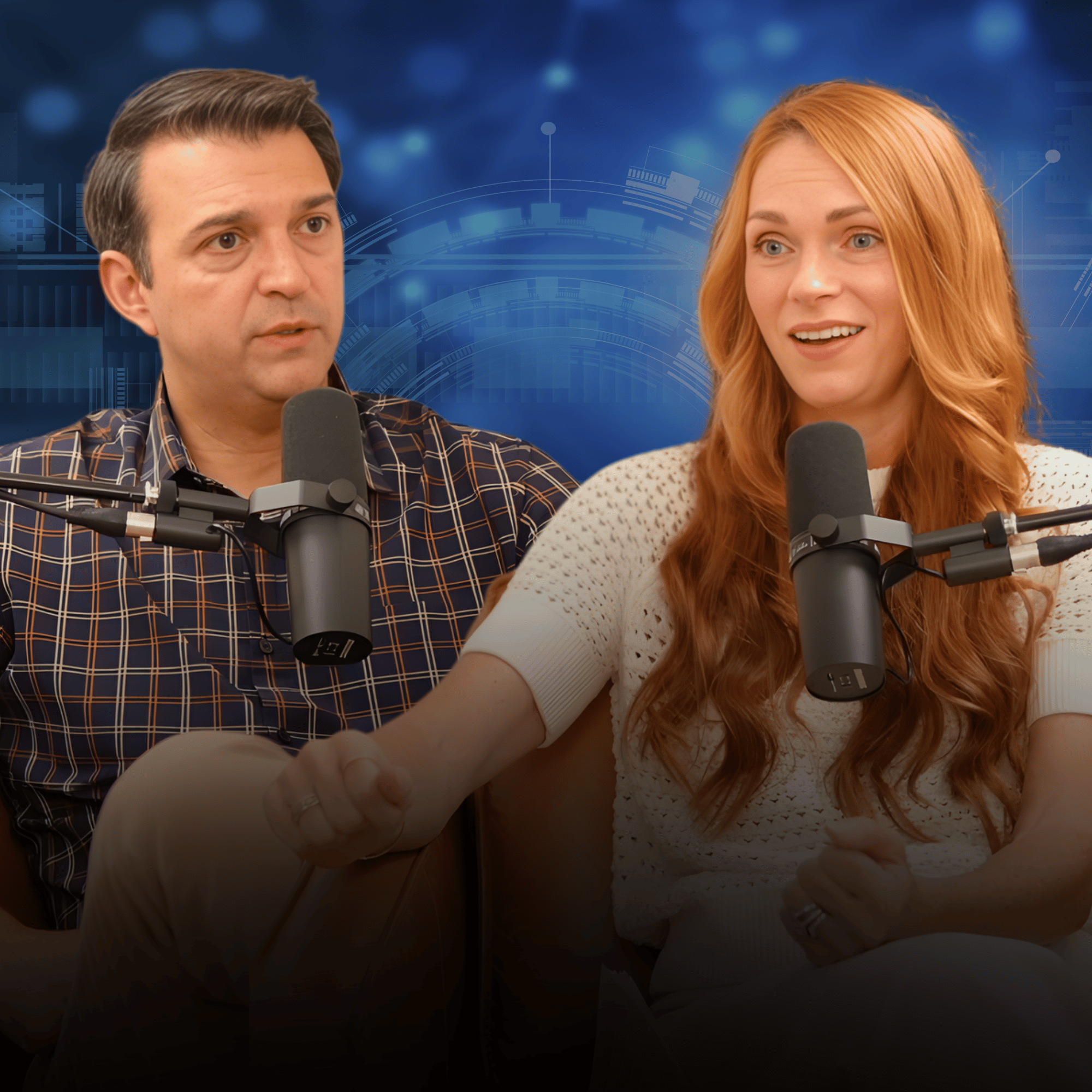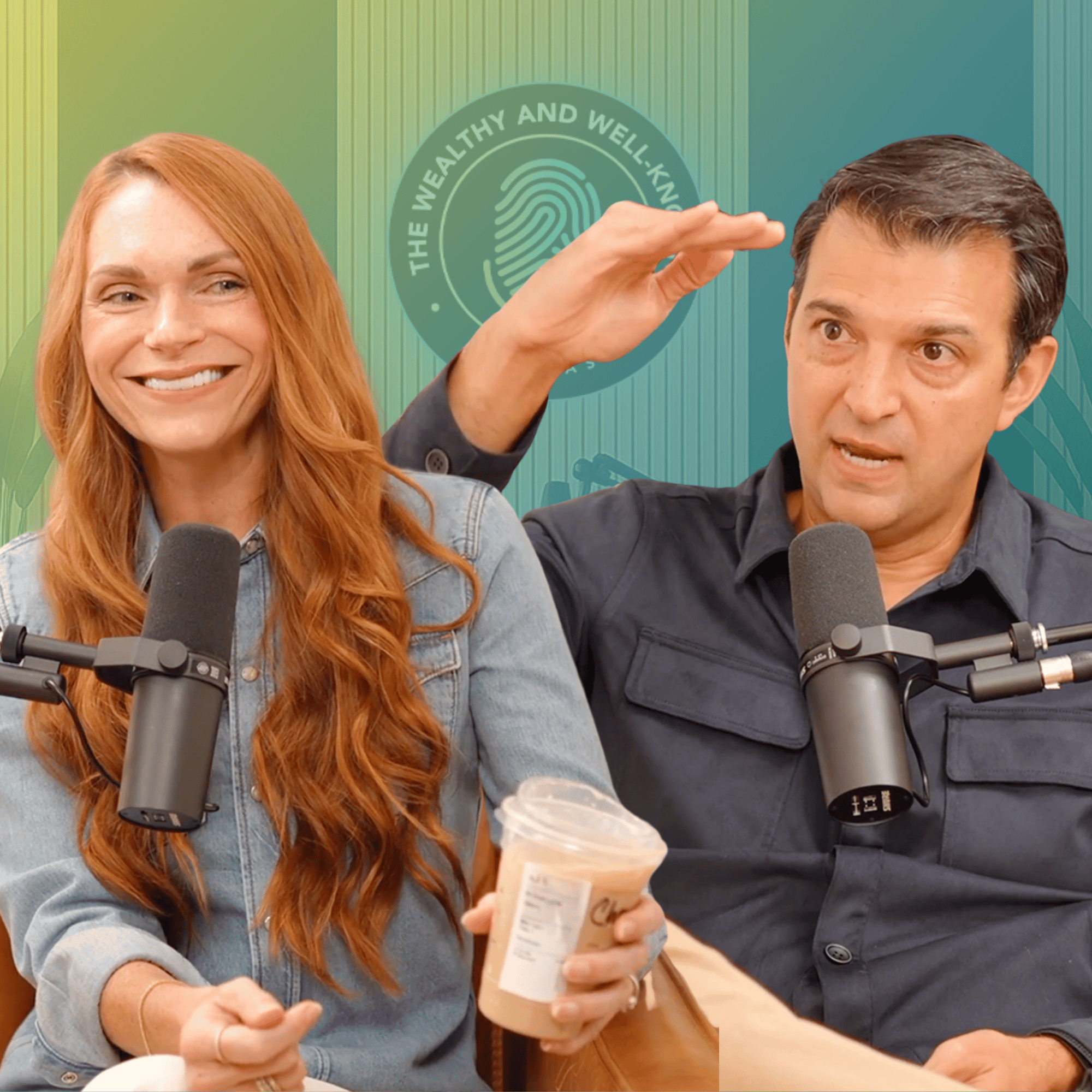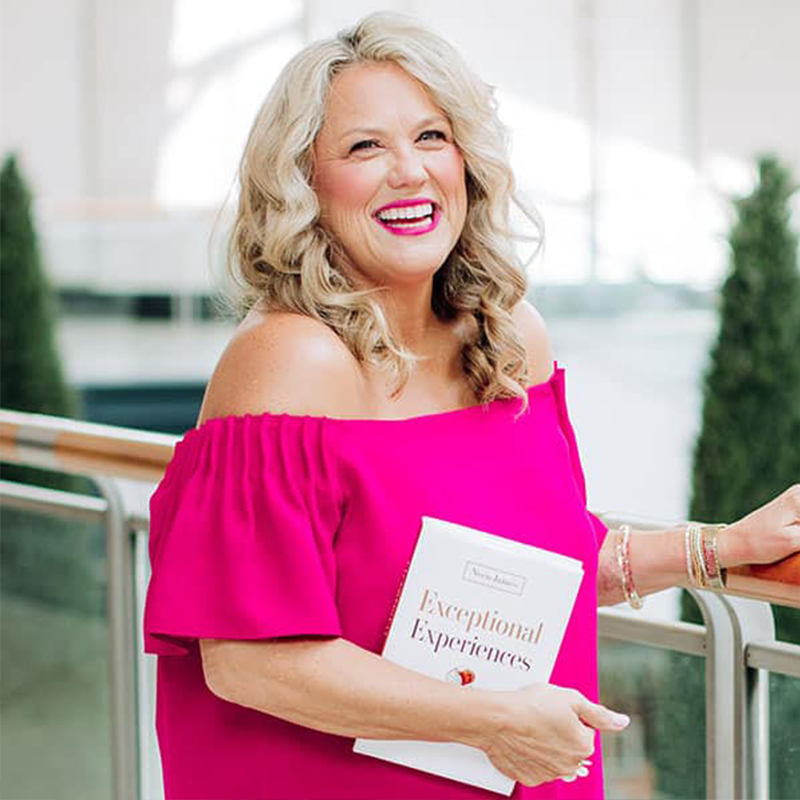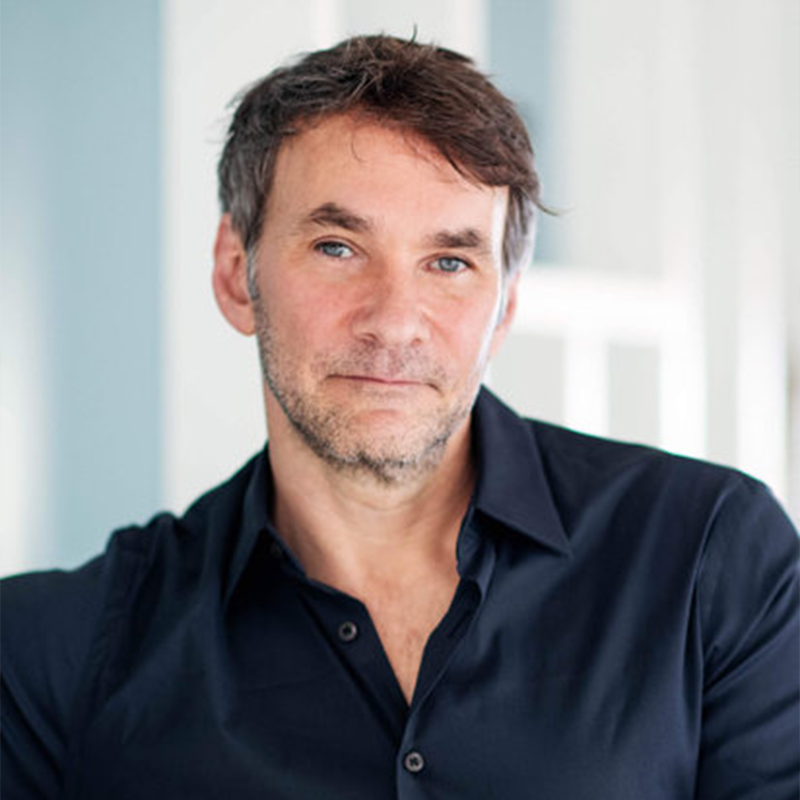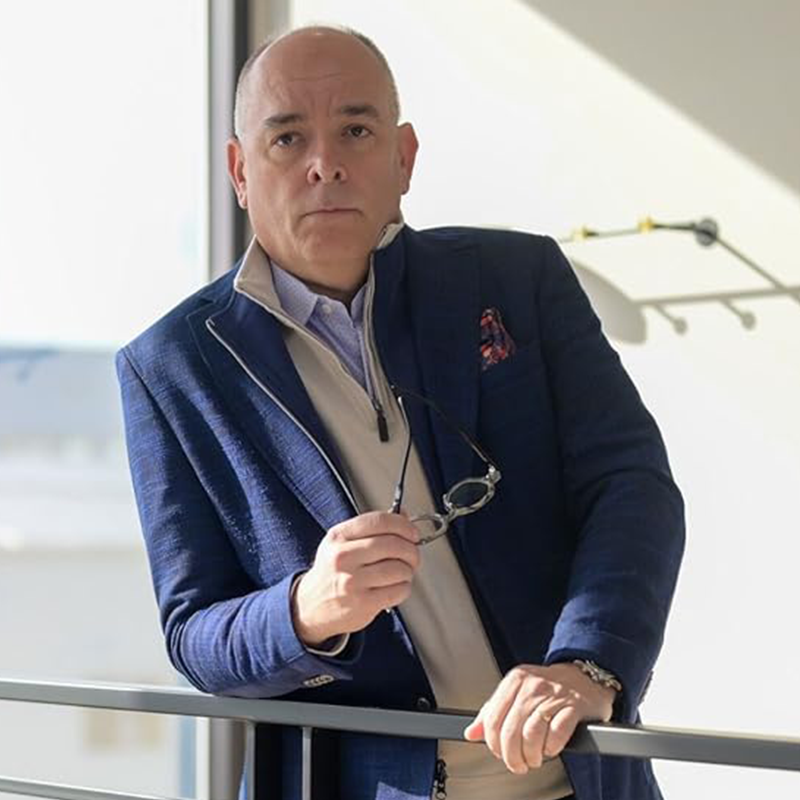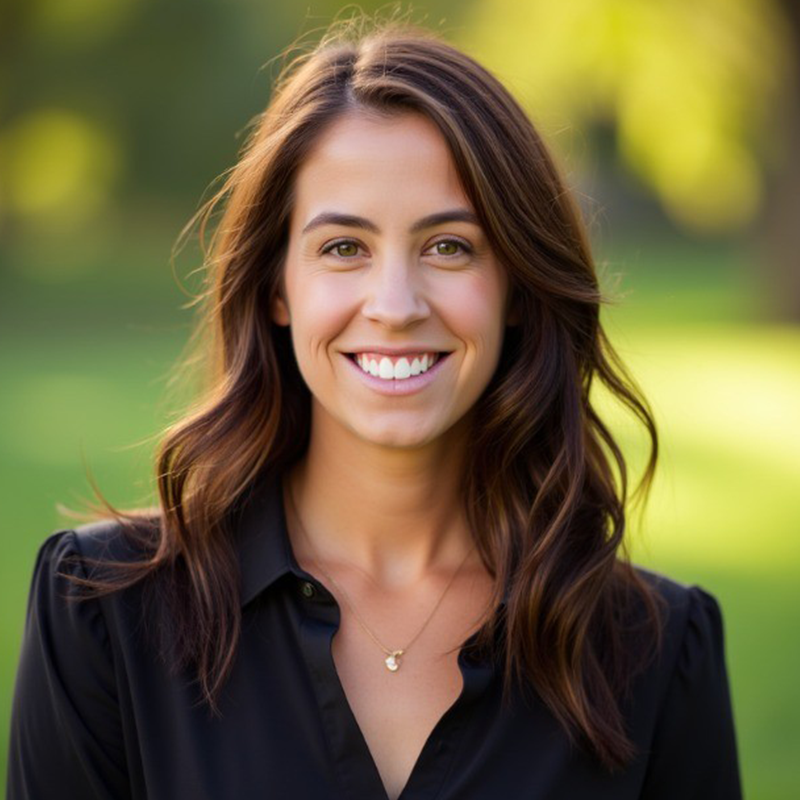ST: (00:06) RV: (00:06) Hey, brand builder, Rory Vaden here. Thank you so much for tuning in to listen to this interview, we are so excited to bring you this information and wanted to let you know that, Hey, there’s no sales pitch coming from anything that we do with this is all our value add to you and the community. However, if you are somebody who is looking for specific strategies on how to build and monetize your personal brand, we would love to talk to you and we offer a free call to everyone that’s interested in getting to know us and is willing to give us a chance to get to know them and share a little bit about what we do. So if you’re interested in taking us up on a free strategy call, you can do that at brand builders, group.com/summit. Call brand builders, group.com/summit. Call, hope to talk to you soon on with the show. RV: (01:03) I’m so happy and excited to be able to bring you a little bit of a discussion from brick and mortar land from one of the women who is really one of the experts and is also kind of a new friend, but we’ve known of each other for like the last couple years, her name’s Stacy Tuschl. And I met her at a couple of different masterminds. I spoke at and through mutual friend, Julie Solomon, some of you know, and she’s amazing. So first of all, she’s a bestselling author and speaker, she’s the owner of multiple seven figure businesses. She’s the creator of something called the foot traffic formula, which we’re gonna talk about. And she, one of the things that I love is she has a real good focus and balance on just not making work, everything always all the time, but like having the personal life and being, being a family, a family woman, or a family, man, I guess you could say two of ’em those of you that are, you know, trying to raise a family. And, and, and in addition to the business recently she actually became she got the Wisconsin, small business person of the year award from the SBA, which if you know anything about like local business, that’s a big, a big freaking deal. And Wisconsin is a big state. So I’m excited to introduce you to her. We’re just going to chat and hear some of her stories. So Stacy, thanks for making some time. ST: (02:36) I’m excited to be here. This is going to be fun. RV: (02:39) So you have 18 years, you five years of doing online business. Yep. Which we’ll talk about that too, but really you’re 18 years, like a true brick and mortar business owner. Like, can you tell us a little bit about that and like how, what you were doing and how you got started? Yeah, so I actually started right out of ST: (03:00) High school. The summer I graduated. I was a dancer in high school, kind of late to the game. So I knew I wasn’t going to do it professionally, but I didn’t want to stop. So I decided while I was going to college, I went to UWM Milwaukee here in Wisconsin. While I was going to school, I decided I was going to teach middle school dancers. And we held classes in my parents’ backyard. Talk about strapping. And I had 17 girls start that first year. Within three years, we had a hundred kids still coming to the backyard. And then thankfully I grew up in a small business. So my grandfather started a construction business about 50 plus years ago, so older than me. So I grew up in that and my family saw the dancers, saw what I was doing and said, I think you have a business here. ST: (03:50) Like, I think we could start charging and you could do this for a living. And like just blew my mind because even though I had grown up in that world, it was very different. I mean, construction, dance classes, it just didn’t feel like this could be something I could do. So in 2005, I officially incorporated started charging, rented a space. Today we have now two locations here in Milwaukee. I own both of the brick and mortar, like commercial buildings that we house the dancers in, and I’m about 50 employees. So it’s a pretty well oiled machine. I no longer teach. I strictly work here in my home office on the business. And then about five years ago, people started to say, how are you doing this? Can you teach me? And that’s kind of the birth of our, my online business. RV: (04:39) Huh. So this is like, so it’s a dance studio effectively. I mean, that’s, that’s what this is. And there’s a whole community dance studios is it’s fascinating. Clint Salter is a, I don’t know if you’ve ever heard of him ST: (04:54) Spoke at cleanse event in January before we all were shut down. RV: (04:58) Oh yeah. I love that guy. And you know, so, but, but one of the reasons that I thought this would be cool to talk about is cause everyone talks about online business and, and I think there’s a good overlap, but foot traffic formula was originally designed. Tell me if I got this right. Specifically for more of those brick and mortars about how to drive more revenue. And so, you know, I kinda think of three things going on here. There’s sort of strategies for, for those of us that are using a personal brand to drive a brick and mortar, then you go, how do we supplement this with online? And then we go, how does COVID interrupt both of those things and marry them together? So that’s kind of how I want to like talk about this, but in a non COVID world for a second, I feel like we never produce content for the people that, that our clients are like, you know, they either have a dance studio or a fitness gym, or they do salons and spas, or we got jewelry designers and they have like boutiques. So if I have a retail business, how do I get people to come in? Yeah. ST: (06:02) Okay. So I love this and here’s what I want to tell you too. Even if you were an online business owner, listen, because business is business is business, right? The strategies I’m using online, I’ve used in my brick and mortar. But the biggest thing that I, I, the difference I should say with brick and mortar is we can get them faster because we’re in person, it’s a deeper connection, right? So sometimes you’ll hear online marketing and they’ll talk about these email drips and spending how many emails, you know, getting them warmed up in the brick and mortar world. I I’m running Facebook ads directly to a free trial or a book, a call or things like that. And we’re getting people on the phone that day and possibly in our building that week. So it’s a little bit different and how fast we can do it because a lot of times our people are searching for us. They already know they have a need and they trust us a little bit more because we are local down the road. We’re one of those neighborhood businesses. But our typical funnel looks like Facebook ad to some way to not just collect their name, their email, but also their phone number. So we get to go a little deeper on our landing pages than a lot of people do in the influencer world. Not everybody’s collecting phone numbers, but in local brick and mortar, it’s more normal. Like it’s the regular everyday thing. RV: (07:20) Yeah. Well, and, and one of the things you said there to me, which is like such a big delineation for people to understand, but whether you’re online or brick and mortar or some combination of the two is when I think of local businesses, that’s like intent based search. Someone is searching for a plumber or a dance studio. And there’s a whole world of digital marketing related to that, which my mind also goes to Google because like the Google network has really like intent based search, which is different from the online world where it’s more like I’m trying to create intent. I’m trying to drum up interest like, Hey, check out this ad, meet me or this piece of content. And then kind of like rope them in versus capture them. Is that, do you see it that same ST: (08:09) For sure. I feel like the intent based marketing is a lot more we spend more time on it. So Google, my business is a thing you want to make sure it’s updated. It’s maximized because people really are searching for us using search engines like Google. So that’s huge for us. It’s absolutely one of our number one resource or sources of new leads. However, we are doing paid traffic to look alike audiences, people that, you know, we’ll upload our current customer base into Facebook and we’re doing lookalikes in this area. So that is an intent. We’re putting it in front of them, hoping, okay, maybe this will be a good fit. Right. So we do a mix of both in our brick. RV: (08:51) Yeah. So, so just so everyone understands, you kind of brushed through that real quick, but it’s like, you actually took your customer, your customer database from your brick and mortar store export it, it, theoretically you could use a plugin, but you export it as a, as an old school CSV file, upload it to Facebook. You could show ads to those people, but then you’re allowing Facebook to create a look alike off of that, knowing that those people are all from a demographic, like a geographic region. And so is going to pick that up and show ads to people like that. ST: (09:25) Yeah. And one thing we do too, to get a little bit more advanced too, is if you have a software where you can say, who is not currently active, that used to be active, like, could we get a reengagement campaign? Could we get them back in the gym? Could we get them? So you don’t, especially with COVID. If, if people have taken a break from you, how do we go back to our inactive list of customers upload that into Facebook and see who we can target. Like that’s another great way to get them back in and engaged. RV: (09:56) And then the other thing. So I love this cause you’re, you’re advertising to your customers. This is like the intersection of digital and brick and mortar you’re advertising to your customers. Like in some that are inactive, you’re advertising to look alike audiences, which are people who Facebook says, looks like these people. And then do you also run ads? I mean, when you’re the one thing about brick and mortar is you go, can I run ads to people who like the ice cream shop right down the street from my studio? Do you do that kind of stuff? ST: (10:25) So it’s a little harder because a lot of these little local brick and mortar businesses, we can’t, we’re not big enough to say like that they like this person, you know, do this. So it’s a little harder, but we will find, you know, for my ideal client, she’s a typical mom who likes target and certain brands. So we can grab bigger companies that are more nationwide that she’s going to, like that would still be a good fit for us. Like if we’re looking for the soccer mom, right. The dance mom, we can find out some of those interests, but it’s, it is harder to grab like the little ice cream shop or the gymnastics studio down the road. RV: (11:00) Gotcha. Okay. So that’s really powerful. So would you say that again, we’re talking brick and mortar, but we’re talking digital strategies for brick and mortar. Do you think most of the, you know, kind of like the primary ways you drive traffic or controllable traffic to your store, is that coming on the digital front and that’s pushing people into your store or are there still a bunch of things that you’re doing that would be like offline advertising that is really moving people into your physical location ST: (11:35) Is definitely pivoted much more digital. I mean, I’ve been around since pre social media. I always tell people, my first memory of marketing was I would walk in subdivisions and hang door hangers on people’s doors. Like Facebook ads was like the most amazing blessing that I’ve ever, that I didn’t have to go walk in some divisions anymore. So I mean, we’ve been doing it a long time. I will say one of our best sources to this day is having a referral program. And I know you’re big on that too. So we, we do kind of like the direct TV model where, you know, the friend gets something as well as the person they refer and we are very public about our referral rewards and referral program. So that’s huge for us. I mean, they’re either coming from a Facebook ad, a Google search or a friend referred them. I mean, those are the three big things we’re finding. RV: (12:25) Interesting. So Facebook ad a Google search or a referral. Yeah. So we had brand builders is that way, right. We have a very public lifetime referral fee. And then Amanda tress, who I know you also know who’s also a good friend of ours. She was on the show, I don’t know, a few weeks ago. And she, you know, her whole business like blew up with all the referral program and she’s talked about that whole thing. Okay. So you talked about Facebook ad, you mentioned, you mentioned Google, my business and then the referral program. Is there anything about else about Google search that we kind of need to know or key in on? And I, I guess this would apply again for brick and mortar, but I think, I feel like we hear a lot of people talk about Facebook ads. But we don’t hear that much about Google for personal brands. And so could you, is there anything there that you feel like we should know? ST: (13:20) So Google my business and Google, right, just in general, SEO is definitely brick and mortar. People are searching for you there, right? We want to make sure that you’re ranking high. Now, if you’re in an area where you want to get on that homepage, but if you have tons and tons of competitors, it can be really hard to fight for a spot on that homepage in the online world. It’s going to be very difficult to fight for that homepage because there are a million people doing something very similar to you. That’s why I think there’s a big difference in people. Don’t really talk about Google and SEO as much online as they do in the brick and mortar world. It’s just less saturated. Right. but I will say with Google ad words I think Google ad words work great for brick and mortars. ST: (14:06) The one thing that I will say is watch your market. So I don’t run Google ads right now because nobody in my area runs Google ads and I’m at the top of Google. So if you Google like Oak Creek, Wisconsin dance classes, I’m going to be right there at the top. So I don’t feel the need to run ads to get higher than myself. If that makes sense. If my competitors started to do it, then I would probably have to consider it. I also know it would totally push me in the game and I’m afraid that if I start proactively, it’ll just push them into the game. And then we’re just going to be outbidding each other when let’s just stay free. If we can. Let’s just say, RV: (14:45) You’re the one that if, especially if you’re the one at the top, ST: (14:49) Yeah. It was still reason to get the Google game. RV: (14:52) We’ll make sure that this podcast isn’t seen by anyone in Wisconsin. We’ll, we’ll, we’ll ST: (14:59) It’s just kind of like my strategy right now, but you may be in a different situation. You might be not even on the homepage, like number one, and you may have a lot of people running Google ads that you might want to think about time to pay to play. Right. There may come a time that I’m going to have to start doing it. It just isn’t right now. RV: (15:18) Yeah. Well, and I think, you know, one of the things about brick and mortar, one of the things about Google in general, that’s amazing is you can actually see how many people are searching for a specific term. And, and then how much it would cost to bid on that term. And so when I think of brick and mortar, I also think about hyper localized search. So like the name of a community or a small, you know, like I’m a Nashville, you know, it, you wouldn’t be going for like personal branding Tennessee, or you could do personal branding Nashville. I mean, it doesn’t really fit for us cause we don’t have like a retail location, but you might use like Oak Hill or green Hills or whatever the name of the community is. If it, if there are people, if there is a lot of, a lot of pain going on, you could like narrow the geographic niche. ST: (16:11) Yeah. And I think there’s different phrases that somebody local is looking for. Especially if they’re typing in Nashville, they might be typing in marketing agency, right. Consulting, like they’re looking for phrases like that. And then that’s something you absolutely could be doing keyword wise, trying to get people to see you, but people that kind of get this whole online world and that there’s gurus out there. Right. They may not be going to Google. They’re probably going to Facebook and kind of going down that rabbit hole. RV: (16:39) Yeah. well, that’s interesting. Okay. So that now this whole context of this conversation was brick and mortar strategies, everything, including the referral program applies to digital as well. Are there, are there things okay, so the foot traffic formula originally, it was kind of targeted at brick and mortar and but all of these things would apply just as you said, in the beginning to any digital business, is there any other sort of advantage that a digital business has that your, you would say is like, you’re seeing a lot of traffic that you really don’t, you can’t do or benefit from and in the brick and mortar world? ST: (17:18) I don’t, I don’t think so. I mean, for the most part, when I started my online business and I was struggling in the beginning, I had to go back and go, well, what did I do in the first business to become successful? And I truly was duplicating a lot of that online. That’s why I always go back and say like, this is just marketing. You know, this is not something brand new. It’s just a transitional period of what our marketing looks like, what business is now turning into. And 2020 has been a slap in the face to say like time to update, you know, your business model if you’re still living in the past. RV: (17:52) Yeah. Well, and like, just even using that as an illustration, like the door hangers, I mean, a Facebook ad is kind of like the equivalent of a door hanger. I mean, you’re going to see it, the diff the difference is you often don’t have to pay for a digital impression where you would have to pay to physically print that. ST: (18:10) Yeah. I paid for everyone. I had to manually put them on every single door, whether somebody took that and just threw it on the ground or threw it in the garbage. Right. but it looked just like a Facebook ad. Would it had a graphic, it had a headline, a call to action with a link. I mean, it took them exactly like you would do it right now in 2020. RV: (18:30) Yeah. I mean, that’s like, you know, when, when we’re trying to teach personal brands about like a webinar or something, we’re going look, the way I built my whole speaking business was I went and spoke for free. And I was on stage in front of live people with humans and they get to sample me. And then that was how they buy the stuff. A webinar is exactly the same thing. Except I think what you’re saying is true. You got to realize in the digital world, it’s, it’s slower, a lower percentage than, you know, kind of like in that physical world. So on the topic of the digital marketing, are there any places, so Facebook and Google, is there any other place that you’re looking or spending time, or you have your eye on right now in terms of online traffic sources beyond Facebook and Google ST: (19:13) For my brick and mortar or online or both? Both. Okay. So we’re definitely, we’re, we’re trying to do Facebook and Instagram, both. So when I say Facebook, I also mean Instagram and we’re definitely starting to look more into LinkedIn and YouTube for our online business this year. We’ve been doing it, but I’m talking like getting really serious and using the platform and maximizing it. RV: (19:38) Yeah. But not for brick and mortar per se. ST: (19:41) I’m not for brick and mortar. I actually thought about with my brick and mortar, I thought about doing a podcast, like a local podcast, and that will be happening. It’s just with COVID things that definitely changed the game a little bit. And that’s something that I is a little different. I don’t see a lot of brick and mortars having a podcast, but I also see podcasting just getting bigger and bigger. And I kind of want to start that trend in my area too, for just that extra credibility. Yeah. So I’m really excited that it would have been on my, to do list already pre COVID, but now we’ll, we’ll be doing something soon which is exciting. Like I love doing something experimenting. Like, let’s see if this works, let’s see what happens. RV: (20:20) Yeah. And we did an interview with a guy named Rick Steele. Who’s has spent hundreds of millions of dollars on Google advertising. And one of the things he was talking about was with the YouTube ads, you can choose to run an ad in front of any specific video, not just a, a channel, but one video. So if there are videos out there that are like getting a lot of views that are somehow for a local market, I mean, it’d be to see, yeah. It seems like the battle there on YouTube and Google land is developing more and more in LinkedIn too. Although I, you know, I hear pretty consistently at LinkedIn feels very expensive to get to people. So let’s talk about just COVID real quick then. So you, you you’ve mentioned COVID for our brick and mortar people. I mean, what do you do, ST: (21:14) Where do you start? RV: (21:15) I mean, yeah. Where do you even start with? I mean, obviously stores, you know, some of them are getting to open up the nail salons and stuff, or start open a little more and more, but what, what was the strategy? I mean, here you are an 18 year vet to brick and mortar, and I’m guessing that for some period of y’all, must’ve got shut down. ST: (21:33) Yeah. We were closed from about mid-March until June 1st. So for us you know, we didn’t have anything digital. We had never been doing anything like that. We, the good thing is because I already was in this world and I, you know, I’ve been on zoom a million times. Like this is where we live as an entrepreneurial online. I was able to go into my brick and mortar and that day say we are immediately going virtual. We are going to have zoom classes. And it’s funny because my entire team was like, what is zoom? We don’t know what you’re talking about. Where are these videos going? What are you after you do the video? Where does the video go? Like, it was just, they were so like, I couldn’t even believe that my team who’s incredible. They just, they didn’t live in that world. ST: (22:18) So what was exciting was I realized, okay, they’re so confused. And this is what’s happening right now for my competitors. They’re doing this whole thing, but they don’t have me going guys. I live on zoom. My mum’s zoom all day long. I’ve got this right. So we were the only ones in my area to pivot virtually. First of all, we pivoted within two days, we opened up on like a Tuesday and said, here’s what we’re doing. And we kind of held it over. We kept, I think we were at like 90% retention that first month. Wow. So we were really like trying everything. And then we got to open back up June 1st, but we’ve actually kept, you can come to us in person or you can stream virtually at the same time for those that don’t feel comfortable. So it’s definitely changed the way we’re going to continue to do business for a little while. But what I realized was we can’t have all of our eggs in one basket in one type of product. Like, all we do is service based businesses in person. That was scary when I realized like, that was a lot more fragile than I realized it was. RV: (23:24) Hm. ST: (23:26) Well now we’re, we’re asking ourselves, what else could we do? Cause I think there’s some people that say, yeah, but I do live of like, like I have a customer that is in live event, promo. They do swag for live events, right. In person events, they’re gone. Right. And they’re so stuck on like, but that’s what we used to do. That’s how used to make money. And you have to just scrap how you used to do things and ask yourself, how would I start again today in 2020? What could I offer that would still work in this market, you know, in the online space per se. RV: (24:02) Yeah. That’s powerful. That’s a powerful question. What did you do to like when you stream? So I was actually curious about this. So we are streaming classes, your dance classes. How are you connecting the camera to zoom? Like, what are you, is that where you using zoom to stream it? Or were you using something else? ST: (24:20) So we were just using zoom. However, some people did not have great computers. So we bought them little webcams that hooked up to their computer. RV: (24:28) Oh, okay. So, so people just, this is your, Oh, that’s right. Cause your instructors are not at the studio either they’re at home or wherever they are ST: (24:36) Correct. Even when we opened back up and they were streaming with it, now they’re in the building, but they all have to have their own computers. We have to have, we have like, I don’t even know maybe seven classrooms going on at the same time. So I need seven computers, seven cameras, seven microphones. Like I needed all the equipment. So that was, that was a process right there. RV: (24:56) But you’re streaming. You basically got a U S like a, an external USB camera that plugs right into the computer. And then you’re just setting that camera wherever you need to film the instructor. Correct. And then how are you miking up an instructor? ST: (25:11) Yeah. So that was a challenge. And that was something I’m like, you know what, no, one’s going to know that, no, one’s going to know they’re going to need good audio. I knew video needs to know. RV: (25:19) I know that. But like these mikes we’re talking on you, can’t like, if you’re teaching dance, you’re not just like, ST: (25:25) I wish I could show you, but there are fitness. Mike’s like, if you Google like fitness microphones, they’re wireless, they plug in your back pocket. So you can actually hook up a headset. And my, now my instructors have these fancy ones that go like around their neck and they sit right here. So they’re talking into the microphone. So there are options for people that need even us, if we want it to walk around and do a whiteboard back here, I could be 10 feet away writing. And you could still hear me with the wireless mic. RV: (25:51) Yeah. Yeah. So the, but it’s Bluetooth, Bluetooth technology basically. Yeah. wow. Well, look at that. We’re getting, we’re getting a few secrets again. We’ll make sure not to run ads to anyone in Wisconsin to promote this episode. And if you’re from Wisconsin, I’m sorry. You just have to ignore this episode. Particularly if you’re in the dance dance business, but I’m not thinking we’re reaching a lot of people in that market, Stacy. So I think, ST: (26:15) And here’s the thing. I really have that abundance mindset of even if they go to do X, Y, Z, I’ll always be one step ahead. Right. I’m always looking and investing and researching, and that’s what you have to do because there are competitors everywhere. Right? So you’ve got to stay on top of your game. They make me stronger. RV: (26:32) Yeah. And I mean, so many of these things, it’s like, they’re simple, but nobody actually does them. Like, there’ll be such a small percentage of people who actually go do something. And it’s, and it’s like as simple as exporting your customer list, uploading it to Facebook and running ads to those people. Who’ve been inactive that could change your business. But only 5% of people who hear that idea will probably ever actually even attempt to do it. ST: (26:58) Right. Cause somebody is thinking, I don’t know how to do that. I don’t know where that would be. I don’t have the software to do that. They think of excuses. Why they can’t instead of just making it work and figuring it out. RV: (27:09) Yeah. So are you, you, you’re still loving the brick and mortar. Like you’re, you’re doing, you’re finding the hybrid. I mean obviously teaching people, brick and mortar. So foot traffic formula is an online business that teaches brick and mortar people, how to use online to drive their brick and mortar business. Right. So you’ve got an online, but you’re still brick and mortar. ST: (27:32) I am. And you don’t, people will say to me all the time, like, why don’t you sell? Like, why don’t you get out of it? And here’s the thing. When you build a business that runs like a well oiled machine, there’s no reason to get out of it. I don’t feel trapped. I don’t feel underpaid. I don’t feel exhausted by my brick and mortar. And when people tell me, like, get out, sell, do this. I always think you probably had a bad experience managing a team. You probably didn’t have consistent paychecks. You probably had a lot more chaos than I’m experiencing. So for me, I don’t have plans to sell my brick and mortar at all. Like we’ve been doing this, I haven’t taught a dance class in over 10 years. I haven’t worked in the building for about seven years. And I plan to keep, to keep running them. RV: (28:17) Wow. Well, and isn’t that the truth? I mean, when you understand the way businesses are valued, all you’re doing is getting an advance on future earnings. So it’s like, I’m just, I’m just giving up an ATM machine that I’ve built and in exchange for a onetime payment, it’s like, well, I kinda like my ATM machine and it’s, as long as I think it’s going to keep running, I’m probably just going to hang on to that. Yeah. That’s awesome. I mean, really, really cool. And just something you just don’t hear every day. So I mean, Stacy, where do you want people to go if, if they want to connect with you or learn about foot traffic formula or, you know, some of the stuff that you’re up to. ST: (28:53) Yeah. So you can just go to my website, Stacy, social.com. I know that is a lot to spell. So I’ll have you look that up on [inaudible] podcast, but yeah, RV: (29:04) L it’s not a big deal, but it, you know, until it’s, you know, you might go Tuscaloosa to show just to shul, but to USC AHL, but yeah, we’ll put a link to it, of course. ST: (29:16) But yeah, I would say my podcasts, foot traffic, and then everywhere on social media, it’s just at Stacey social. RV: (29:22) Yeah. I love it. Well, thanks for sharing some of these secrets. This is a very unique space. I think you’re, you’re one of the earlier people for sure, into this space and I love that you’re doing it. I love that. You’re like running the brick and mortar doing it as an active, not teaching stuff you used to do, but like, you’re actually, you’re doing it. It’s really good. ST: (29:44) I think that was one of the big differences with COVID. We had an influx of people coming to me and it’s because I’m still running it. I’m in the thick of it. That was a crazy mass in March. And when they could learn what I was doing in real time, that was helpful. So it actually showed me the importance of keeping the brick and mortar to truly be able to teach in real time what’s going on so we can continue to strengthen our skills as well. RV: (30:10) I love it. Well, we’ll link up to Stacy tuschl.com. Thanks for being here. We wish you the best and we’ll talk to you again.

